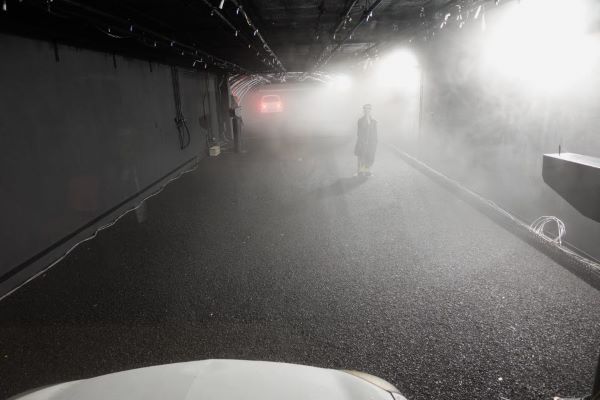Getting autonomous vehicles to work properly in sunny and dry weather is difficult enough. Add heavy rain, high winds and dense fog and the task becomes even more difficult. The ROADVIEW project is about just that – autonomous vehicles in extreme weather.

This EU project, with 15 partners in seven countries, is one of the first in the world to focus on autonomous vehicles under harsh weather conditions. While the rest of autonomous vehicle development takes place under favourable external conditions – typically sunny and dry – the researchers in ROADVIEW are working on how to make the vehicles work under completely different conditions.
“There are many difficulties. Take something as simple as snow splashing up from a passing vehicle. Today, most autonomous vehicles perceive the snow as an object and sometimes brake heavily to stop,” says Maytheewat Aramrattana, who is coordinating VTI’s part of the project.
Harsh weather is particularly challenging because it affects such a central element of autonomous vehicles – their sensors. In purely technical terms, the impact of the weather can also be perceived as the sensors malfunctioning and being defective, which is of course a completely different matter. One of the tasks of the researchers is to make the vehicles understand what is due to weather and external circumstances and what is due to a defect.
During the first year of the project, ROADVIEW researchers physically met on three occasions, in Finland, France and at Halmstad University, which is coordinating the project. In between, the researchers, who work together digitally, meet approximately every two weeks.
“We are in the early stages of a major project and much remains to be done, but we have made a good start. In ten years’ time, perhaps, I think we will have autonomous vehicles that can also handle harsh weather,” says Maytheewat Aramrattana, joking that VTI aktuellt will have to come back to see if he was right.
The solutions the researchers are working on include more and better sensors (such as thermal cameras and radar) and noise reduction to improve the detection of vulnerable road users and obstacles on the roadway. Work is also underway to combine the vehicle’s sensors with fixed equipment along the road and other infrastructure.
Maytheewat Aramrattana and his VTI colleagues are mainly working on the virtual tests that will be used to test autonomous systems under different conditions. What should be included in the tests and how should they be defined? One track is to develop what are known as digital twins, where simulations are used instead of physical tests.
“Simulations need to be based on data from the physical world to be accurate. This is another challenge in our work, as extreme weather is difficult to both create and control,” says Maytheewat Aramrattana.
ROADVIEW stands for Robust Automated, Driving in Extreme Weather and is funded by the EU in the amount of EUR 9.7 million (about SEK 114 million). The project started in 2022 and will last four years.
Text: Mikael Sönne
Contact
- Maytheewat Aramrattana – Researcher maytheewat.aramrattana@vti.se






Follow us: